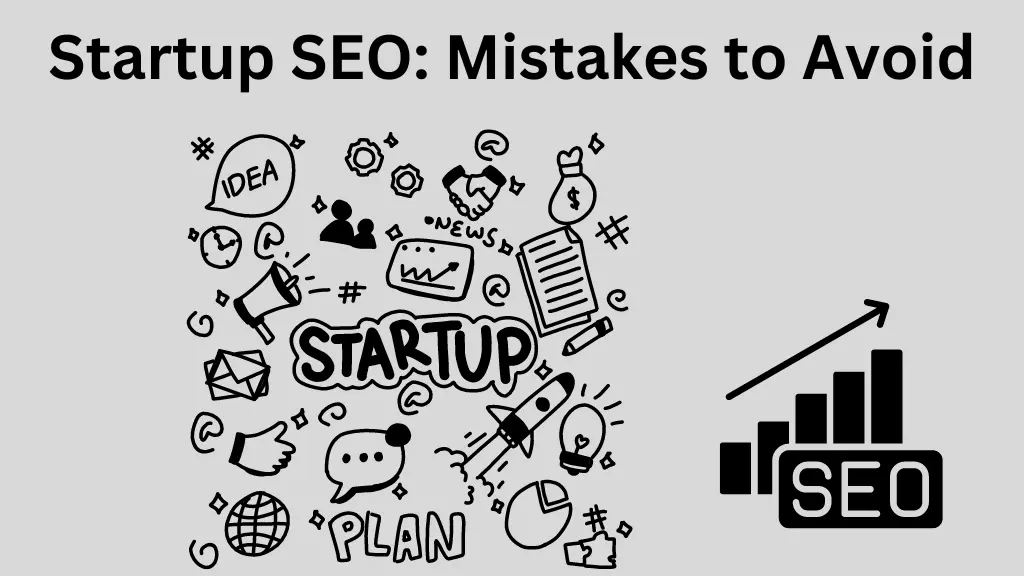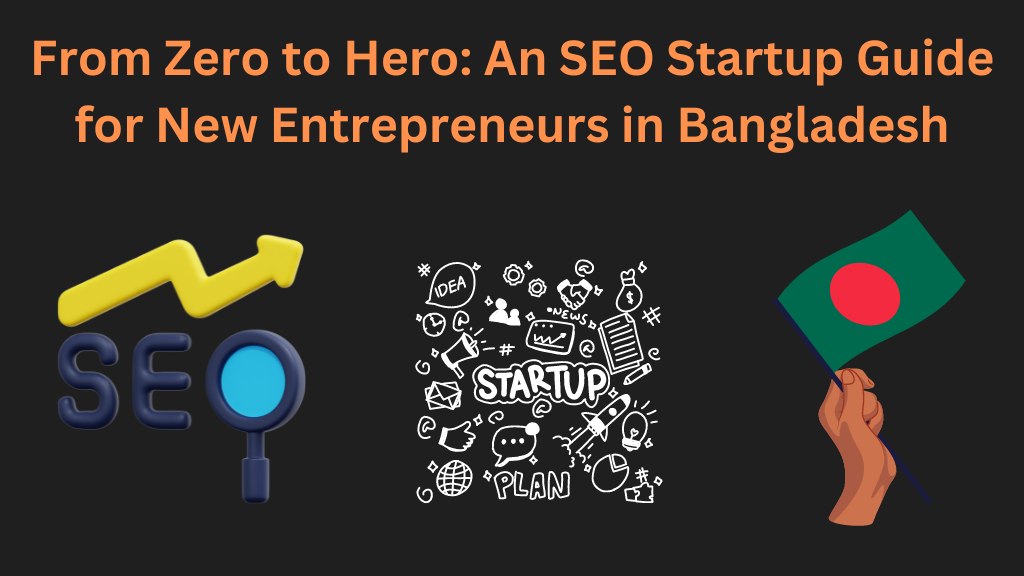Are you wondering why your startup isn’t ranking on Google despite your best efforts? SEO, a quintessential tool for digital visibility, can be a tricky terrain for newcomers. Startups, in particular, are prone to certain missteps that can hinder their online success. In this blog post, we’ll delve into the five most common SEO mistakes that startups make, dissecting each to understand what goes wrong and why. But we won’t stop there. You’ll walk away with robust strategies and insider tips on how to turn things around, ensuring your SEO efforts are not just done, but done right. Buckle up for a journey to SEO mastery that promises to put your startup on the map!

Table of Contents
ToggleUnderstanding SEO and Its Importance for Startups
SEO essentially involves tailoring your website and online content to rank higher in search engine results when users search for relevant keywords. This increased visibility translates into organic traffic, meaning potential customers find you naturally, without expensive paid advertising. For startups, organic traffic is a game-changer. It’s cost-effective, sustainable, and specifically targets users genuinely interested in what you offer.
SEO also builds brand credibility and establishes you as an industry authority. Imagine someone searching for solutions you excel at providing – wouldn’t you want your website to appear at the top of their search results? By mastering SEO, you unlock this competitive advantage and place your startup in front of the right audience at the right time.
Mistake #1: Neglecting Keyword Research
Keyword research is the foundation of any successful SEO strategy. It helps you understand what terms and phrases your target audience uses to search for products, services, or information related to your startup. Skipping this crucial step leaves you guessing in the dark, optimizing for terms that nobody searches for.
How to do it right:
- Utilize free tools like Google Keyword Planner and Ahrefs.
- Target long-tail keywords that are more specific and have lower competition.
- Focus on keywords with high search volume and relevant buying intent.
- Integrate keywords naturally throughout your website content, meta descriptions, and titles, avoiding keyword stuffing.
Mistake #2: Ignoring On-Page SEO
On-page SEO refers to optimizing elements within your website itself to improve its search engine ranking. It’s often considered the low-hanging fruit of SEO, and neglecting it can significantly hinder your progress.
Common on-page mistakes startups make:
- Neglecting title tags and meta descriptions: These short snippets are your website’s first impression in search results, so optimize them with relevant keywords and compelling descriptions.
- Ignoring image optimization: Use descriptive alt text for images to improve image search ranking and accessibility.
- Forgetting internal linking: Link relevant pages within your website to create a clear information hierarchy and distribute link equity effectively.
Best practices for on-page optimization:
- Ensure mobile-friendliness: More and more searches happen on mobile devices, so prioritize a responsive website that looks and functions flawlessly on all screen sizes.
- Optimize page loading speed: Slow loading times frustrate users and negatively impact SEO ranking. Utilize tools like Google PageSpeed Insights to identify and address performance bottlenecks.
- Structure your content using clear headings and subheadings: This improves readability and helps search engines understand your content’s organization.
Mistake #3: Overlooking Site Performance and User Experience (UX)
Search engines prioritize websites that deliver a positive user experience. If your website loads slowly, navigates poorly or presents confusing information, users will bounce back quickly, sending negative signals to search engines.
How to optimize your site for better UX and SEO:
- Conduct regular website usability tests: Identify areas that confuse users and implement improvements based on their feedback.
- Simplify your website navigation: Ensure users can easily find what they’re looking for with a clear and intuitive navigation structure.
- Utilize high-quality visuals: Engaging images and infographics break up text, enhance understanding, and make your content more visually appealing.
Mistake #4: Underestimating Content Quality
Content is king, and this mantra holds even truer in the dynamic world of SEO. Search engines favor websites that consistently publish high-quality, informative, and engaging content relevant to their target audience.
Pitfalls to avoid:
- Duplicating content: Search engines penalize websites with copied content, so ensure your content is original and unique.
- Keyword stuffing: While keywords are important, overuse comes across as unnatural and spammy. Integrate them organically within your content.
Mistake #4: Underestimating Content Quality
Strategies for creating engaging, SEO-friendly content :
- Focus on creating in-depth content: Provide valuable insights and solutions, going beyond superficial information.
- Variety is key: Experiment with different content formats like blog posts, infographics, videos, and case studies to keep your audience engaged.
- Optimize content for long-tail keywords: Target long-tail keywords with lower competition but higher buying intent.
- Promote your content: Share your content across social media, relevant online communities, and industry publications to increase its reach.
Mistake #5: Failing to Build a Solid Backlink Profile
Backlinks are links from other websites pointing to yours. They act as votes of confidence, telling search engines your website is valuable and trustworthy. A strong backlink profile significantly boosts your SEO ranking.
Common backlinking mistakes startups should avoid:
- Buying backlinks: This is a black-hat SEO tactic that violates search engine guidelines and can get your website penalized.
- Participating in link exchanges: While seemingly reciprocal, these often involve websites with low-quality or irrelevant content, offering minimal SEO benefits.
How to ethically build a strong backlink profile:
- Guest blogging: Contribute high-quality articles to relevant websites that link back to yours.
- Create linkable assets: Develop valuable resources like infographics, e-books, or research papers that others will naturally want to link to.
- Engage in online communities: Actively participate in forums, discussions, and social media groups to earn organic backlinks.
- Broken link building: Identify broken links on relevant websites and offer your content as a replacement.
Additional SEO Pitfalls to Avoid
- Neglecting mobile SEO: As mentioned earlier, prioritize a mobile-friendly website experience.
- Ignoring local SEO: If your business has a physical location, optimize your website and online listings for local searches.
- Not tracking your results: Utilize analytics tools to monitor your website traffic, keyword rankings, and backlink profile to track progress and identify areas for improvement.
Quick tips to avoid these pitfalls:
- Stay updated on SEO trends and best practices. Search engine algorithms evolve, so adapt your strategies accordingly.
- Perform regular website audits to identify and fix technical issues.
- Seek professional help if needed. SEO can be complex, and experienced consultants can offer valuable guidance.
Implementing SEO the Right Way
Embracing a strategic approach is key to successful SEO. Here’s a step-by-step guide to get you started:
- Conduct thorough keyword research: Define your target audience and identify relevant keywords to optimize for.
- Optimize your website on-page: Implement on-page best practices like title tag optimization, internal linking, and structured data markup.
- Create high-quality content: Publish valuable, informative, and engaging content regularly.
- Build a strong backlink profile: Focus on earning natural backlinks from high-quality websites.
- Track your progress and analyze your results: Use analytics tools to measure your SEO success and identify areas for improvement.
- Be patient and consistent: SEO is a long-term game, so be patient and implement your strategy consistently.
Conclusion
Avoiding these common pitfalls and implementing the strategies outlined here will put your startup on the right track to achieving SEO success. Remember, SEO is an ongoing process, so stay updated, adapt your approach based on results, and don’t hesitate to seek professional help if needed. By investing in SEO as part of your overall marketing strategy, you can unlock organic traffic, build brand authority, and attract qualified leads, propelling your startup towards sustainable growth.
Don’t wait, take action today!
Ready to take your startup’s online visibility to the next level? Contact us today for a personalized SEO consultation and let’s craft a customized strategy to help you achieve your digital goals!






2 responses
Its like you read my mind You appear to know a lot about this like you wrote the book in it or something I think that you could do with some pics to drive the message home a little bit but instead of that this is fantastic blog An excellent read I will certainly be back
Thanks for the feedback.